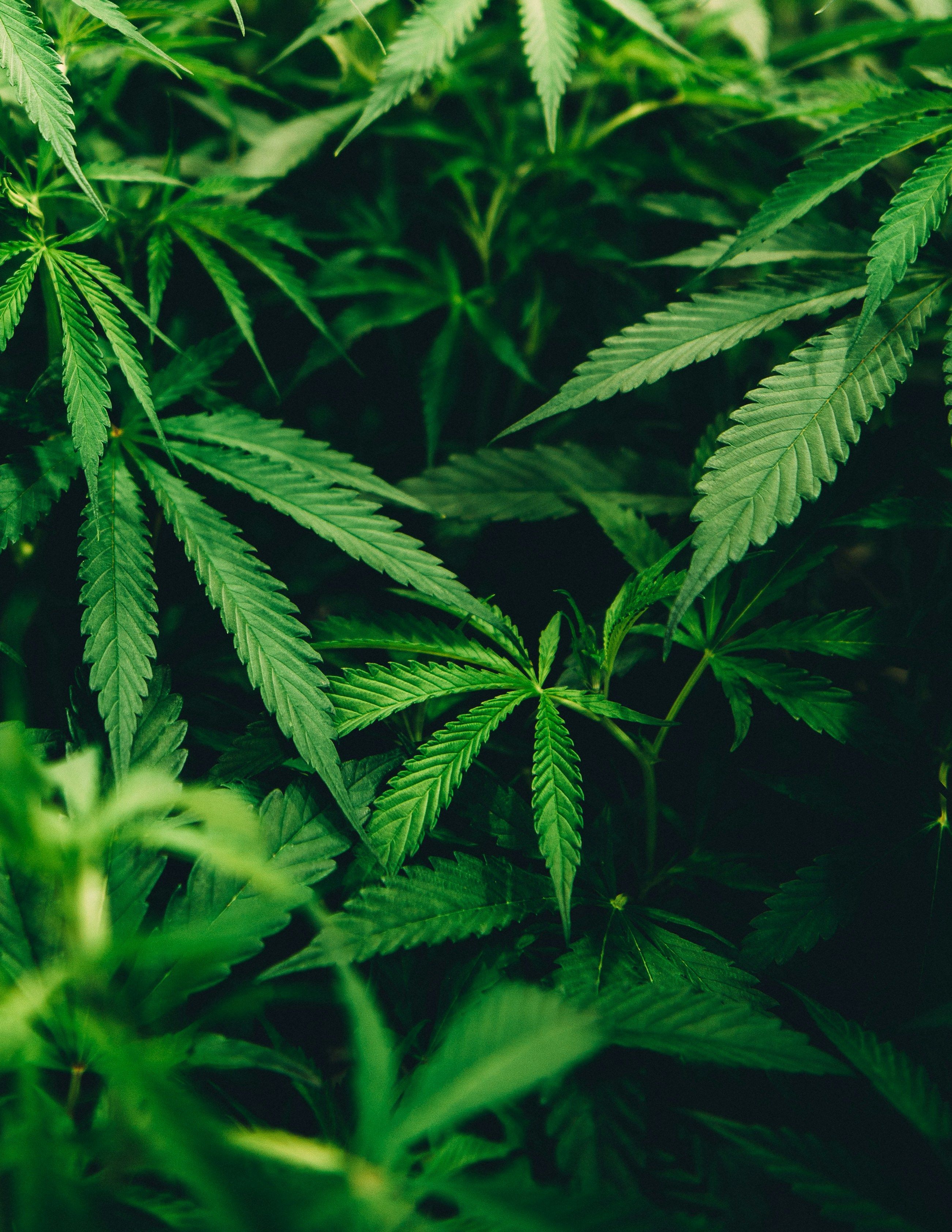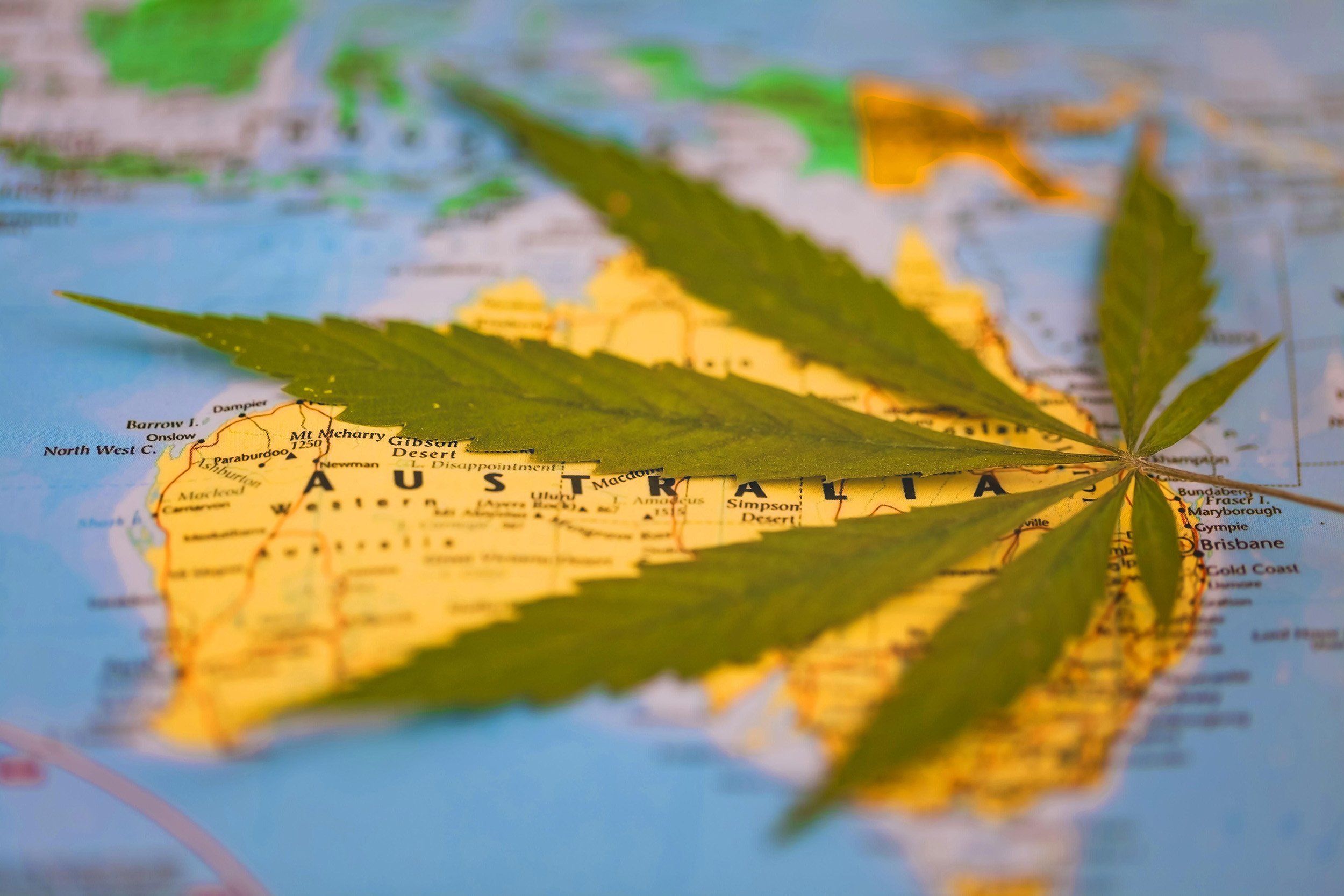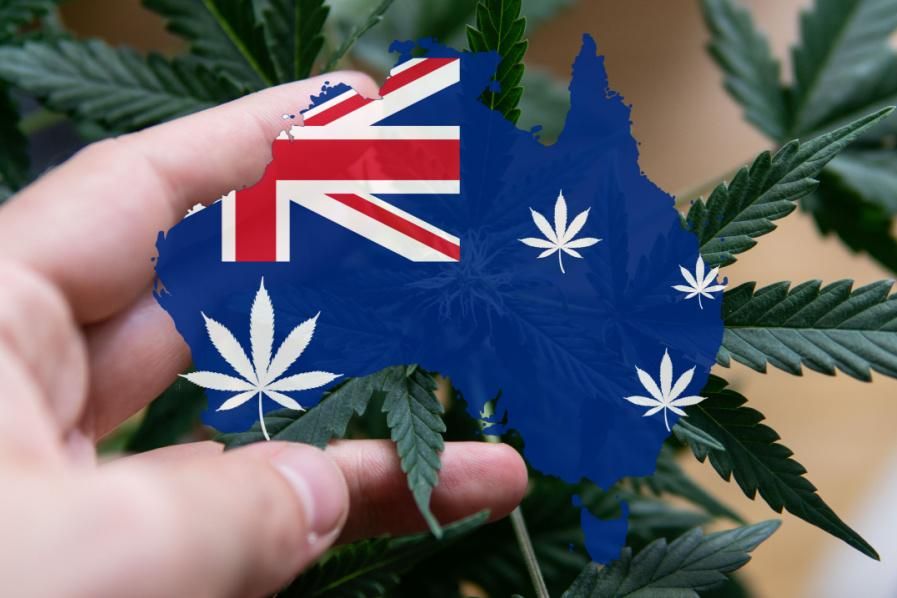- First quarter revenue was $88.8 million , up 101% from the first quarter 2020 and 27% sequentially
- First quarter net loss before non-controlling interest was $23.0 million , compared to $7.4 million in the fourth quarter 2020
- Adjusted EBITDA was $26.9 million in the first quarter, up 196% compared to $9.1 million in the fourth quarter 2020
- 2021 revenue target increased to at least $400 million
Harvest Health & Recreation Inc. ("Harvest" or the "Company") (CSE: HARV, OTCQX: HRVSF), a vertically integrated cannabis company and multi-state operator in the U.S., today reported its financial and operating results for the first quarter 2021. All financial information is provided in U.S. dollars unless otherwise indicated.
First Quarter 2021 Financial Results
- Total revenue in the first quarter was $88.8 million , an increase of 101% from $44.2 million in the first quarter of 2020, and up 27% compared to $69.9 million in the fourth quarter of 2020.
- Gross profit in the first quarter was $47.9 million , compared to $18.1 million in the first quarter of 2020, and $31.3 million in the fourth quarter of 2020.
- Gross profit margin in the first quarter was 53.9%, compared to 41.0% in the first quarter of 2020 and 44.8% in the fourth quarter of 2020.
- Net loss before non-controlling interest was $23.0 million for the first quarter, compared to $7.4 million in the fourth quarter of 2020.
- Adjusted EBITDA in the first quarter was $26.9 million , compared to $9.1 million in the fourth quarter of 2020.
Please see the supplemental information regarding the use of Non-GAAP Financial Measures, and a reconciliation of Non-GAAP Financial Measures.
First Quarter 2021 Business Highlights
- On January 22, 2021 , Harvest recorded the first recreational cannabis sale in the state of Arizona at its Scottsdale location. Harvest began serving adult use customers in addition to medical patients at all 15 of its dispensaries on January 22 .
- On January 25, 2021 , Harvest announced the closing of a sale leaseback transaction with Innovative Industrial Properties, Inc. Harvest sold a 292,000 square foot facility for $23.8 million . Harvest will operate the cultivation and processing facility and expects to receive up to $10.8 million in tenant improvements.
- On February 22, 2021 , Harvest announced the divestiture of two medical marijuana dispensaries in Bismarck and Williston, North Dakota for an immaterial amount of cash.
- On March 11, 2021 , Harvest opened one new dispensary in Whitehall, Pennsylvania .
- On March 15, 2021 , Harvest announced the settlement of its dispute with Falcon International, Inc. In accordance with the settlement terms, Harvest now owns a 10% equity stake in Falcon and received a ten year warrant to purchase up to 20% of the company's shares at an exercise price of $1.91 per share.
- As of March 31, 2021 , Harvest owned, operated, or managed 37 retail locations in six states, including 15 open dispensaries in Arizona .
Recent Developments
- Harvest opened two new medical retail dispensaries in Florida on May 5 th and May 6 th in Olympia Heights and West Palm Beach .
- On May 7, 2021 , Harvest announced that a settlement was reached regarding the grower/processor permittee AGRiMED Industries of PA, LLC.
- On May 10, 2021 , Trulieve announced its planned acquisition of Harvest. Each Harvest shareholder is expected to receive 0.117 shares of Trulieve for each Harvest share, representing total consideration of approximately $2.1 billion . The implied price per Harvest share is equal to $4.79 , representing a 34% premium to the May 7, 2021 closing price of the Harvest shares.
Outlook
Harvest is raising its full year 2021 revenue target to at least $400 million . Reported gross margins are expected to be at or above 50% and will likely continue to fluctuate from quarter to quarter.
Management Commentary
"Our first quarter results show the benefits of reaching impactful milestones such as the launch of recreational sales in Arizona " said Chief Executive Officer Steve White . "We are focused on our key operational and financial priorities in 2021 as we continue to build on this positive momentum."
Conference Call & Webcast
Harvest Health and Recreation Inc. will host a conference call and audio webcast with Chief Executive Officer Steve White , Monday May 10, 2021 at 8:00 AM Eastern Time .
Registration for this event is required. Please use this link to register:
https://www.directeventreg.com/registration/event/4832288
Following registration, an email confirmation will be sent including dial in details and unique conference call codes. Registration will remain open during the call however we recommend advance registration to access the event.
First quarter results will be available at:
https://investor.harvesthoc.com/financials/default.aspx
The live conference call webcast and replay will be available at:
https://investor.harvesthoc.com/financials/default.aspx
HARVEST HEALTH & RECREATION INC. | ||||||||||
March 31, 2021 | December 31, 2020 | |||||||||
ASSETS | ||||||||||
Current assets: | ||||||||||
Cash and cash equivalents | $ | 106,948 | $ | 78,055 | ||||||
Restricted cash | 3,000 | 4,542 | ||||||||
Accounts receivable, net | 9,477 | 5,051 | ||||||||
Notes receivable, current portion | 8,412 | 21,556 | ||||||||
Related party notes receivable, current portion | 10,313 | 10,052 | ||||||||
Inventory, net | 45,193 | 36,862 | ||||||||
Other current assets | 5,380 | 5,280 | ||||||||
Total current assets | 188,723 | 161,398 | ||||||||
Notes receivable, net of current portion | 11,036 | 18,211 | ||||||||
Property, plant and equipment, net | 161,663 | 176,827 | ||||||||
Right-of-use assets for operating leases, net | 98,921 | 60,843 | ||||||||
Related party right-of-use assets for operating leases, net | 5,564 | 5,621 | ||||||||
Intangibles assets, net | 272,886 | 272,118 | ||||||||
Corporate investments | 40,924 | 19,091 | ||||||||
Acquisition deposits | — | 50 | ||||||||
Goodwill | 116,176 | 116,041 | ||||||||
Assets held for sale | 6,581 | 6,585 | ||||||||
Other assets | 22,618 | 19,850 | ||||||||
TOTAL ASSETS | $ | 925,092 | $ | 856,635 | ||||||
LIABILITIES AND STOCKHOLDERS' EQUITY | ||||||||||
LIABILITIES | ||||||||||
Current liabilities: | ||||||||||
Accounts payable | $ | 14,809 | $ | 10,755 | ||||||
Other current liabilities | 34,948 | 28,896 | ||||||||
Contingent consideration, current portion | 10,898 | 17,985 | ||||||||
Income tax payable | 26,826 | 17,504 | ||||||||
Operating lease liability, current portion | 2,061 | 2,906 | ||||||||
Related party operating lease liability, current portion | 142 | 135 | ||||||||
Notes payable, current portion | 29,713 | 20,910 | ||||||||
Total current liabilities | 119,397 | 99,091 | ||||||||
Notes payable, net of current portion | 240,046 | 244,066 | ||||||||
Warrant liability | 37,261 | 20,908 | ||||||||
Operating lease liability, net of current portion | 98,072 | 58,637 | ||||||||
Related party operating lease liability, net of current portion | 5,557 | 5,595 | ||||||||
Deferred tax liability | 53,082 | 53,082 | ||||||||
Total liabilities associated with assets held for sale | 718 | 718 | ||||||||
Other long-term liabilities | 53 | 63 | ||||||||
TOTAL LIABILITIES | 554,186 | 482,160 | ||||||||
STOCKHOLDERS' EQUITY | ||||||||||
Capital stock | 686,899 | 667,248 | ||||||||
Accumulated deficit | (316,729) | (293,607) | ||||||||
Stockholders' equity attributed to Harvest Health & Recreation Inc. | 370,170 | 373,641 | ||||||||
Non-controlling interest | 736 | 834 | ||||||||
TOTAL STOCKHOLDERS' EQUITY | 370,906 | 374,475 | ||||||||
TOTAL LIABILITIES AND STOCKHOLDERS' EQUITY | $ | 925,092 | $ | 856,635 | ||||||
HARVEST HEALTH & RECREATION INC. | ||||||||
For the three months ended | ||||||||
2021 | 2020 | |||||||
Revenue, net of discounts | $ | 88,826 | $ | 44,235 | ||||
Cost of goods sold | (40,908) | (26,086) | ||||||
Gross profit | 47,918 | 18,149 | ||||||
Expenses | ||||||||
General and administrative | 26,276 | 26,419 | ||||||
Sales and marketing | 898 | 1,276 | ||||||
Share-based compensation | 4,862 | 13,804 | ||||||
Depreciation and amortization | 2,529 | 1,670 | ||||||
Total expenses | 34,565 | 43,169 | ||||||
Operating income (loss) | 13,353 | (25,020) | ||||||
Other (expense) income | ||||||||
Gain on sale of assets | 1,795 | 2,419 | ||||||
Other income | 1,504 | 9,050 | ||||||
Fair value of liability adjustment | (24,434) | 6,945 | ||||||
Foreign currency gain (loss) | 12 | (138) | ||||||
Interest expense | (8,717) | (4,550) | ||||||
Loss before taxes and non-controlling interest | (16,487) | (11,294) | ||||||
Income taxes | (6,481) | (3,794) | ||||||
Net loss from continuing operations before non-controlling interest | (22,968) | (15,088) | ||||||
Net loss from discontinued operations, net of tax | — | (384) | ||||||
Net loss before non-controlling interest | (22,968) | (15,472) | ||||||
Net (income) loss attributed to non-controlling interest | (154) | 88 | ||||||
Net loss attributed to Harvest Health & Recreation Inc. | $ | (23,122) | $ | (15,384) | ||||
Net loss per share - basic and diluted | $ | (0.06) | $ | (0.05) | ||||
Attributable to Harvest Health and Recreation Inc. | $ | (0.06) | $ | (0.05) | ||||
Attributable to discontinued operations, net of tax | $ | — | $ | — | ||||
Weighted-average shares outstanding - basic and diluted | 407,632,006 | 304,179,427 | ||||||
Use of Non-GAAP Financial Measures
This press release includes certain non-GAAP financial measures as defined by the SEC. Reconciliations of these non-GAAP financial measures to the most directly comparable financial measure calculated and presented in accordance with GAAP are included below. This information should be considered as supplemental in nature and not as a substitute for, or superior to, any measure of performance prepared in accordance with GAAP. Our management uses adjusted EBITDA to evaluate our operating performance and trends and make planning decisions. Our management believes adjusted EBITDA helps identify underlying trends in our business that could otherwise be masked by the effect of the items that we exclude. Accordingly, we believe that adjusted EBITDA provides useful information to investors and others in understanding and evaluating our operating results, enhancing the overall understanding of our past performance and future prospects, and allowing for greater transparency with respect to key financial metrics used by our management in its financial and operational decision-making.
Reconciliation of Non-GAAP Financial Measures
The table below reconciles Net income (loss) to Adjusted EBITDA for the periods indicated.
For the three months ended March 31, | ||||||||
2021 | 2020 | |||||||
Net loss (GAAP) before non-controlling interest | $ | (22,968) | $ | (15,472) | ||||
Add (deduct) impact of: | ||||||||
Net interest and other financing costs (1) | 8,721 | 4,716 | ||||||
Income tax | 6,481 | 3,794 | ||||||
Amortization and depreciation (2) | 3,519 | 2,454 | ||||||
Gain on sale of assets | (1,795) | (2,419) | ||||||
Fair value of liability adjustment | 24,434 | (6,945) | ||||||
Other income | (1,504) | (9,050) | ||||||
Foreign currency (gain) loss | (12) | 138 | ||||||
Share-based compensation expense | 4,862 | 13,804 | ||||||
Discontinued operations, net of tax | — | 384 | ||||||
Other expansion expenses (pre-open) | 3,172 | 3,341 | ||||||
Transaction & other special charges | 2,006 | 447 | ||||||
Adjusted EBITDA (non-GAAP) | $ | 26,916 | $ | (4,808) | ||||
(1) Includes $4 and $166 of interest reported in cost of sales. |
(2) Includes $990 and $784 of depreciation reported in cost of sales. |
Forward-looking Statements
This press release contains "forward-looking statements," within the meaning of United States and Canadian securities laws. Such statements reflect current estimates, expectations and projections about future events and involve risks and uncertainties relating to future events and Harvest's performance, and actual events may differ materially from these forward looking statements, which may be identified by the use of words such as, "may", "would", "could", "will", "likely", "expect", "anticipate", "believe, "intend", "plan", "forecast", "project", "estimate", "outlook" and other similar expressions. These forward looking statements include, without limitation, including statements regarding Trulieve Cannabis Corp.'s ("Trulieve") and Harvest's strategic business combination and the expected terms, timing and closing of the combination, estimates of pro-forma financial information of the combined company, Trulieve's and Harvest's expected financial performance for fiscal 2021, the combined operations and prospects of Trulieve and Harvest, the current and projected market and growth opportunities for the combined company and value for shareholders; our expectations for 2021 financial performance and targeted revenue; prospects for revenue growth and profitability in our core markets and in the U.S. cannabis industry generally; our continued growth in retail dispensary openings, same store sales growth, recreational sales in Arizona , and expanded cultivation and manufacturing operations; the development of federal and state cannabis regulatory framework in the United States applicable to multi-state operators, including a delay in, or a failure to, federally decriminalize cannabis in the United States , as well as such frameworks in Harvest's core markets; adverse changes in the application or enforcement of current laws, including those related to taxation; adverse changes in the public perception of cannabis; the effects of the weather, natural disasters, and health pandemics, including the novel coronavirus (COVID-19) on customer demand, Harvest's supply chain as well as its consolidated results of operation, financial position and cash flows; the ability of Harvest to develop Harvest's brand and meet its growth, revenue and profitability projections and objectives; its ability to generate sufficient cash flow to repay debt obligations and to fund operating expenses and future investment; the ability of Harvest to complete planned acquisitions that are accretive to its revenue; the ability of Harvest to obtain and/or maintain licenses to operate in the jurisdictions in which it operates or in which it expects or plans to operate; changes in general economic, business and political conditions, including changes in the financial markets, and, in particular, the ability of Harvest to raise debt and equity capital in the amounts and at the costs that it expects; the ability to locate and acquire suitable companies, properties or assets necessary to execute on Harvest's business plans; the ability of Harvest to execute planned store openings and secure cannabis supply at appropriate amounts and cost; fluctuations in the prevailing prices for cannabis and cannabis products in the markets that Harvest operates in and sources supply; its ability to resolve existing and future litigation and arbitrations on acceptable terms; and increasing costs of compliance with extensive government regulation. These risks, uncertainties and assumptions could adversely affect the outcome and financial effects of the plans and events described herein. In addition, even if the outcome and financial effects of the plans and events described herein are consistent with the forward-looking statements contained in this document, those results or developments may not be indicative of results or developments in subsequent periods.
Forward-looking statements involve significant risks, assumptions, uncertainties and other factors that may cause actual future results or anticipated events to differ materially from those expressed or implied in any forward-looking statements. Please see the heading "Risk Factors" in Harvest's Annual Report on Form 10-K, which was filed with the Securities and Exchange Commission and in Harvest's Annual Information Circular, which was filed on SEDAR, both of which were filed on March 30, 2021 , and subsequent filings that Harvest makes with the Securities and Exchange Commission and SEDAR, for a discussion of the material risk factors that could cause actual results to differ materially from the forward-looking information. Harvest does not undertake to update any forward-looking statements that are included herein, except in accordance with applicable securities laws.
About Harvest Health & Recreation Inc.
Headquartered in Tempe, Arizona , Harvest Health & Recreation Inc. is a vertically integrated cannabis company and multi-state operator. Since 2011, Harvest has been committed to expanding its retail and wholesale presence throughout the U.S., acquiring, manufacturing, and selling cannabis products for patients and consumers in addition to providing services to retail dispensaries. Through organic license wins, service agreements, and targeted acquisitions, Harvest has assembled an operational footprint spanning multiple states in the U.S. Harvest's mission is to improve lives through the goodness of cannabis. We hope you'll join us on our journey: https://harvesthoc.com
Facebook: @HarvestHOC
Instagram: @HarvestHOC
Twitter: @HarvestHOC
![]() View original content to download multimedia: https://www.prnewswire.com/news-releases/harvest-health--recreation-inc-reports-first-quarter-2021-financial-results-301287402.html
View original content to download multimedia: https://www.prnewswire.com/news-releases/harvest-health--recreation-inc-reports-first-quarter-2021-financial-results-301287402.html
SOURCE Harvest Health & Recreation Inc.







